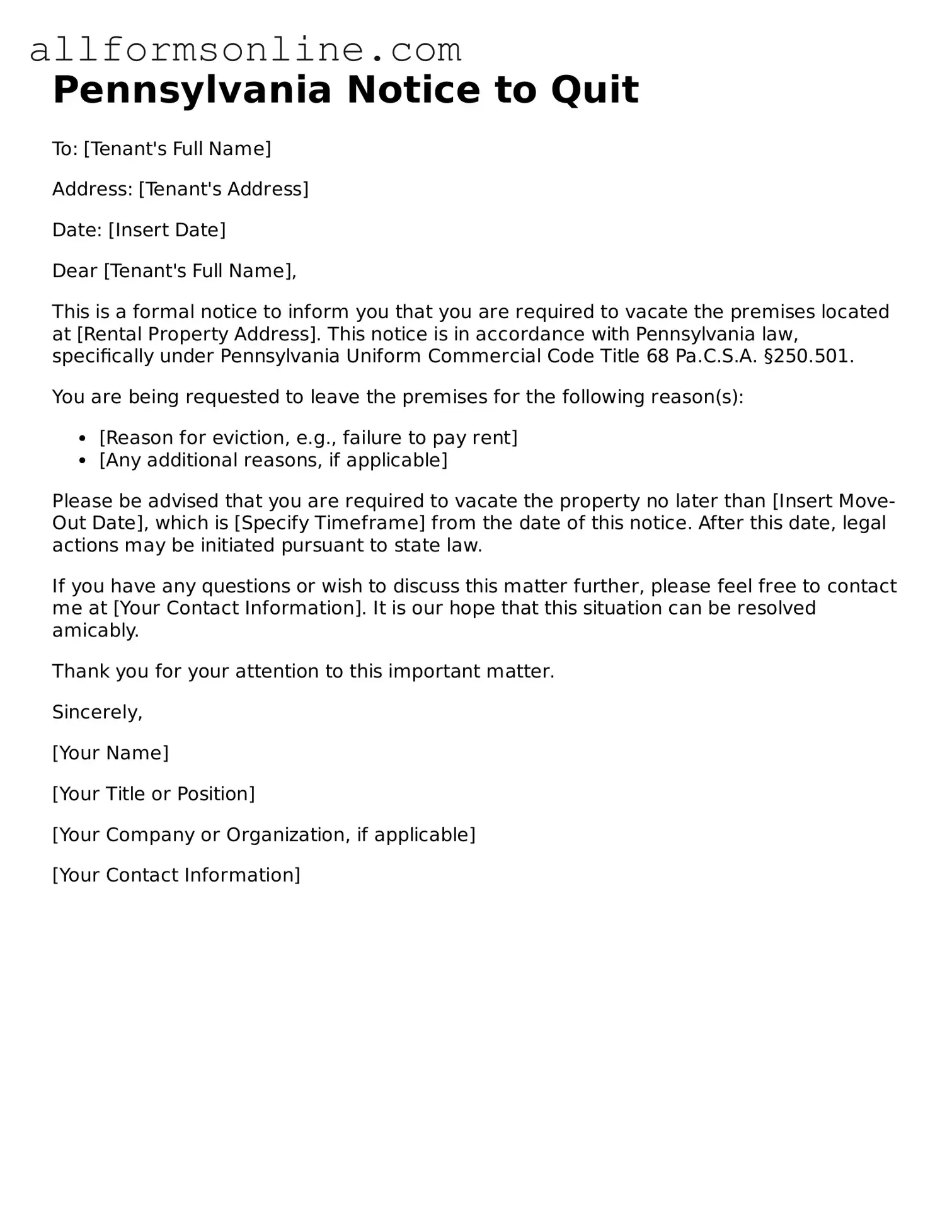What is a Pennsylvania Notice to Quit form?
The Pennsylvania Notice to Quit form is a legal document used by landlords to notify tenants that they must vacate the rental property. This notice is typically the first step in the eviction process and outlines the reasons for termination of the tenancy.
When should a landlord use a Notice to Quit?
A landlord should use a Notice to Quit when they wish to terminate a lease agreement. Common reasons include non-payment of rent, lease violations, or the expiration of a lease term. The notice provides the tenant with a specified period to vacate the premises.
How much notice must be given in Pennsylvania?
The required notice period varies depending on the reason for eviction. For non-payment of rent, a 10-day notice is typically sufficient. For other lease violations, a 15-day notice may be required. If the lease has expired, a 30-day notice is often used.
Does the Notice to Quit need to be in writing?
Yes, the Notice to Quit must be in writing to be legally enforceable. It should clearly state the reason for termination and the timeframe within which the tenant must vacate the property.
Can a tenant respond to a Notice to Quit?
Yes, a tenant can respond to a Notice to Quit. They may choose to rectify the issue, such as paying overdue rent, or they can contest the notice if they believe it is unjust. It’s advisable for tenants to communicate with their landlord promptly.
What happens if a tenant does not leave after receiving a Notice to Quit?
If a tenant does not vacate the property by the deadline specified in the Notice to Quit, the landlord may proceed with legal action to evict the tenant. This typically involves filing for eviction in court.
Is a Notice to Quit the same as an eviction notice?
No, a Notice to Quit is not the same as an eviction notice. The Notice to Quit is a preliminary step that informs the tenant of the landlord's intent to terminate the lease. An eviction notice is issued after the tenant fails to comply with the Notice to Quit.
Where can I find a Pennsylvania Notice to Quit form?
You can find a Pennsylvania Notice to Quit form through various online legal resources, local courthouse websites, or by consulting with a legal professional. It’s essential to ensure the form complies with Pennsylvania state laws.
